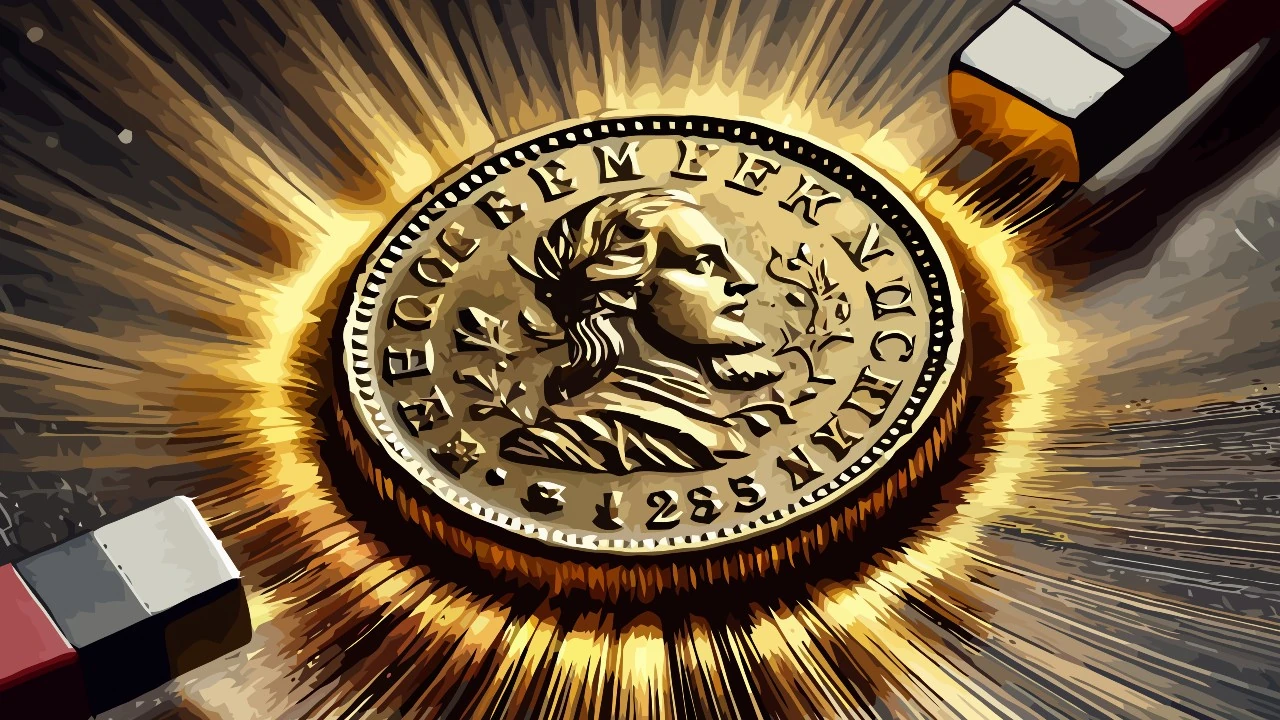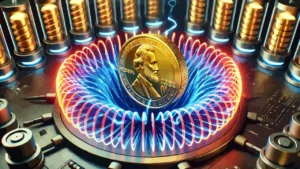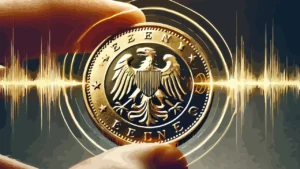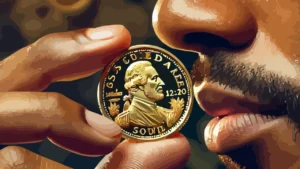Gold coins, often made of alloys of gold, silver, and copper, are generally considered to be diamagnetic, exhibiting a weak repulsion to magnets. However, in some cases, some of them exhibit unexpected paramagnetic behavior.
In this article we examine the possible causes of this phenomenon that could worry anyone who is trying to verify the authenticity of a coin.
Contents
#1. Magnetic properties of metals
Gold, silver, and copper are diamagnetic metals, which means that, under normal conditions, they do not exhibit a significant response to magnetic fields. Diamagnetism manifests itself as a slight repulsion to external magnetic fields, and is an intrinsic property of these metals.
However, the magnetic behavior of a coin depends not only on the nature of its main components, but also on their interaction. Metal alloys can modify the individual properties of the elements that compose them. For example, the addition of small amounts of other metals or the melting and solidification process can affect the electronic distribution of the atoms, altering the magnetic response of the material.
Temperature can also play a role: while pure gold remains diamagnetic at any temperature, some quantum phenomena in alloys can lead to slight alterations in the magnetic response. It is therefore essential to understand not only the chemical composition, but also the physical context in which a coin is analyzed.
#2. The effect of impurities in the alloy
Not all gold coins are made of 100% pure gold, as some contain a percentage of copper, silver or other metals to improve their strength and durability. Although gold, silver and copper are diamagnetic, even the smallest presence of impurities with paramagnetic properties can alter the magnetic behavior of the coin.
A typical example is the presence of traces of iron, nickel or cobalt, metals with strong paramagnetic or even ferromagnetic properties. During the refining and melting process of gold, although all unwanted elements are eliminated, small quantities of these metals can accidentally remain in the final alloy. Even concentrations of less than 1% can affect the magnetic properties of the coin.
Additionally, the origin of the gold used to mint a coin can affect its purity. Recycled or multi-mine gold may contain varying impurities that slightly alter the coin’s response to magnetic fields.
Finally, modern analysis techniques, such as electron magnetic resonance spectroscopy and mass spectrometry, allow us to identify with extreme precision the presence of impurities and their effect on the magnetic behavior of gold alloys.
#3. Crystalline structure and treatments
The crystalline structure of a metal alloy can have a significant impact on its magnetic properties. During cooling after melting, the arrangement of atoms can change depending on the rate of solidification and the presence of other elements in the alloy.
Under certain conditions, the formation of crystalline defects or microscopic inclusions of other materials can introduce paramagnetic behavior even in an alloy that should theoretically be diamagnetic. Dislocations and grains in the crystal structure can trap impurities or cause changes in the distribution of electrons, affecting the coin’s response to magnetic fields.
Heat treatment can also alter magnetic properties. Processes such as annealing or rapid cooling can modify the internal structure of the coin, inducing variations in its magnetic response. Coins subjected to particular industrial processes can therefore develop a paramagnetic behavior not foreseen by their nominal chemical composition.
#4. Possible contamination
The minting process of coins involves several stages, including melting the alloy, rolling, cutting, and pressing. In each of these stages, the coin may come into contact with materials that can affect its magnetic properties.
For example, the presses and dies used for minting are often made of steel, a material that can release microscopic ferromagnetic particles onto the surface of the coin. The cleanliness of the working tools is also a crucial aspect: residues of paramagnetic materials can contaminate the alloy, altering its properties.
Another factor is the use of surface treatments or protective coatings. Some coins are subjected to galvanic processes or other finishes that may include metals with magnetic properties different from those of the base alloy. This can lead to localized paramagnetism, particularly evident in detailed instrumental analyses.
Finally, exposing the coin to intense electromagnetic fields during the manufacturing process could temporarily influence its magnetic behavior, inducing eddy currents or other anomalies that modify its response to magnetic fields.











Leave a Reply